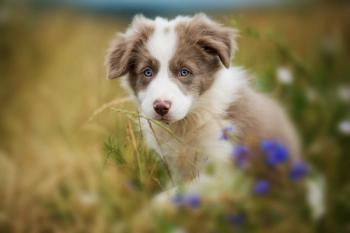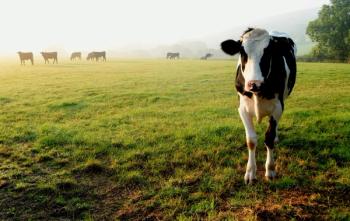
An MD and DVM Q&A with Dr. Opal
Dr. Steven Opal answers your questions about the flu and kids, cats, and more
Q. What about cats and H1N1?
A. The outbreak in Minnesota on pig farms was probably an example of human-to-animal transmission of the virus. So pigs can get the virus from people. Although this virus can exist in other species, although it remains most prevalent in avian as opposed to mammalian species.
Q. Since trans-species transmission occurs and sick kids stay home with their pets, should we be concerned?
A. Cats and other pets can occasionally become infected with human influenza viruses. I am not sure about the degree to which that is important in the epidemiology of continuing either the human or animal disease. Depending on the virus and on the season, influenza can cause significant respiratory illness in pigs, and in certain years, it can have significant impact on the pig population. Birds usually tolerate influenza well; they get a diarrheal illness but it is usually not fatal.
Q. In the event of a mutation that involves the H5 portion of the avian flu, is it likely that the current H1N1 vaccine will offer some immunity to those who have been vaccinated, or is it completely unpredictable?
A. The major immunodominant epitope of influenza is hemagglutinin. So if it is H5, it is a totally separate immune response from H1N1. Should a need arise, there is a huge stockpile of H5 vaccine, but we would probably have to get another immunization. The thing that makes us concerned is that the H5 has a fairly high mutation rate—the virus is changing in the bird population. It is possible that the vaccine we stockpiled against avian H5N1 a few years ago will not be all that effective should the avian virus begin circulating with human-to-human transmission in 2010. The stockpiled vaccine might not give optimal protection if the avian H5N1 virus keeps mutating over time.
Q. Although ventilators and better treatments are now available, could our healthcare system still become overwhelmed should a 1918-like situation arise?
A. No vaccine for H1N1 was available through the whole flu season in the Southern Hemisphere. The capabilities of critical care specialists, emergency rooms, and ventilators were stretched but not overwhelmed. Based on their experience and because of the relative avirulence of new H1N1, should the same thing happen in the Northern Hemisphere, I expect that we would be able to weather the storm.
Q. A lot of kids have been presumably exposed to influenza—their flu was not typed at the time of their illness, but they are assumed to have had H1N1. Should these children be vaccinated against H1N1?
A. People in the Northern Hemisphere who had the flu in the summer or fall of 2009 most assuredly had new H1N1 and are probably protected from becoming infected again. Is there a risk of immunizing these kids? No. People who have the antibodies tolerate the vaccine as well as people who do not have the antibodies.1 Although there is not huge experience with this vaccine, there is no evidence that suggests that previous exposure would cause more vaccine reactions.
Q. What are the prospects of seeing a more modern manufacturing process than egg passage?
A. A tissue culture system has been developed, but eggs are still a good way of increasing the viral titers. But the tissue culture system now works to increase the viral titers as quickly as occurs in allantoid membrane, so it will likely become the standard of care within the next two years. It will be great when that happens because it is much easier to upscale tissue culture system production than egg-based systems. That improved technology is coming, but, unfortunately, it was not available in 2009.
REFERENCE
1. Plennevaux E, Sheldon E, Blatter M, et al. Immune response after a single vaccination against 2009 influenza A H1N1 in USA: a preliminary report of two randomised controlled phase 2 trials. Lancet 2010;375:41-48.
Newsletter
From exam room tips to practice management insights, get trusted veterinary news delivered straight to your inbox—subscribe to dvm360.




